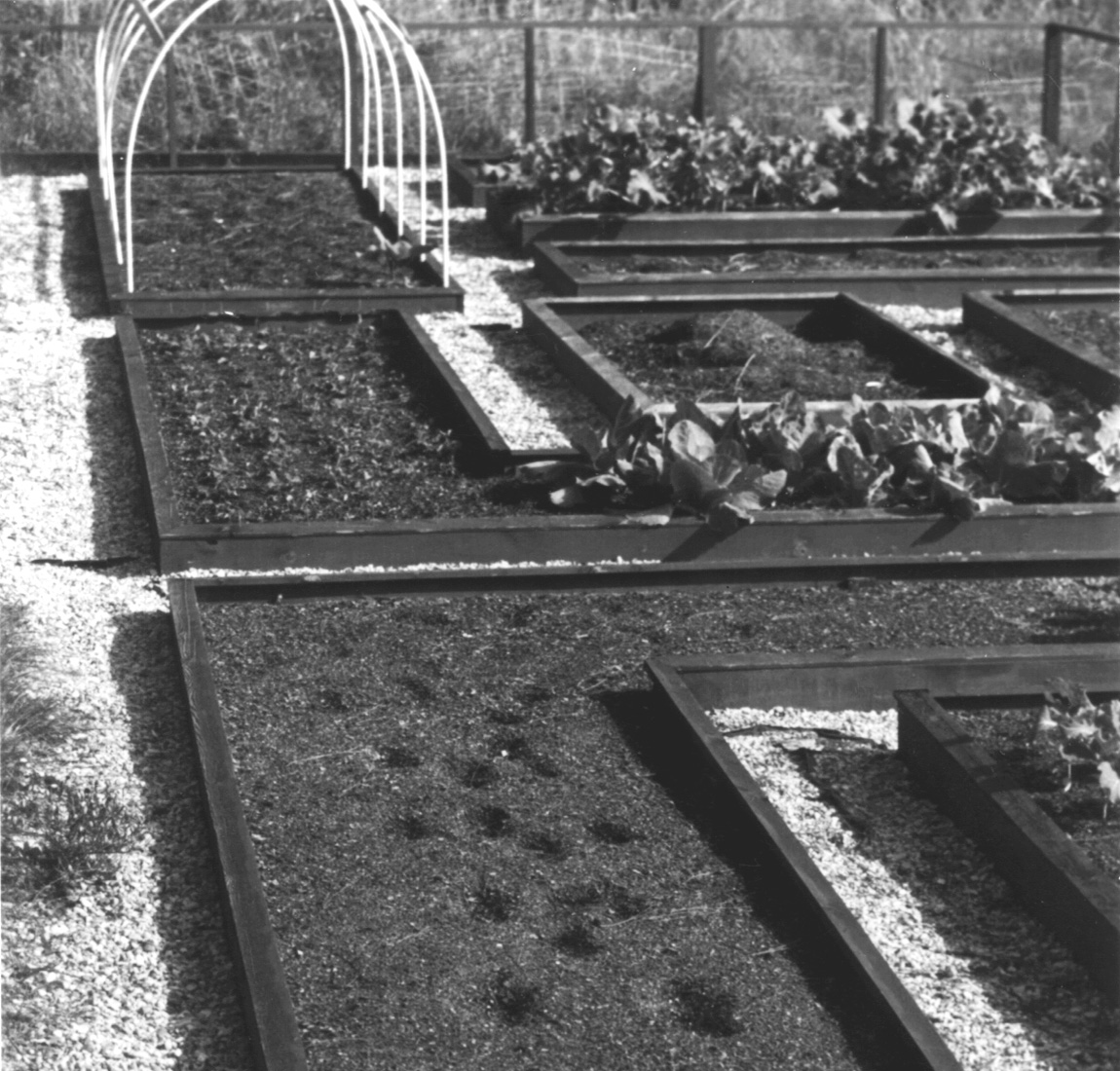Raised Beds
Raised beds help problem areas
Raised beds can help where gardening space is limited, the site is low and collects water, or the soil drains poorly. Raised beds are planting areas where the soil is several inches higher than that of the natural grade. This is accomplished by adding soil to the growing area, or by adding and mixing into the native soil amendments such as compost, sand, composted sawdust, or bark.

Where the native soil is adequate, raised beds can be made by removing several inches of soil from the bed area, filling the excavation with organic matter like manure or old hay, and mixing the soil with the added organic matter. It is also possible to pull soil from the walkways between beds and place it on the beds, filling the walkways with mulch materials like pine needles.
Raised beds can be framed with wood, bricks, or cement blocks, or they can be left unframed. Framing adds to the appearance, and depending on the materials used, may provide seating.
Ideally, raised beds should be no wider than 4 feet (so you can easily reach the center from either side) and no longer than 25 feet unless cross-overs are provided. Beds 4 feet wide and 25 feet long contain 100 square feet and make calculations for rates of application of fertilizer and granular materials easier. Beds accessible from only one side should be narrower than 4 feet. All framed beds should be of the same width so that covering materials (shade frames, sash for cold frames) fit all beds, making rotation easy.
Raised-bed soil that has been improved by adding organic matter and sand often enables excellent root crops like carrots, onions, and parsnips to grow, even though they would not grow in the native soil. Select vegetables that produce a lot for the space they occupy. Trellis vining crops like cucumbers, pole beans, Malabar spinach, and melons. Support melon fruit in slings.
Raised beds require more water than ground-level beds, but when the alternative is no garden at all, it’s worth the extra effort. Here are some additional advantages of raised-bed gardening:
- Raised beds produce more vegetables per unit of garden space because space is not wasted with walkways between every row.
- Soil in raised beds dries and warms more quickly in spring, which permits earlier planting of spring vegetables.
- Soil does not compact because soil in beds is not walked on.
- Closely spaced plants in raised beds shade out weeds and reduce weed problems and the need for frequent cultivation.
Raised bed gardening, however, does have disadvantages. Some of these are listed below:
- Closer spacing of plants can reduce air flow and increase disease problems.
- Yields from individual closely spaced plants may be lower than from widely spaced plants (total production from the closely spaced plants is often higher).
- Raised beds require more frequent watering because of improved drainage.
- Raised beds may require more frequent fertilization because of the leaching resulting from frequent watering and excellent drainage.
- Raised beds with permanent sides make it difficult to relocate the garden.
- Raised beds can be expensive to establish.

